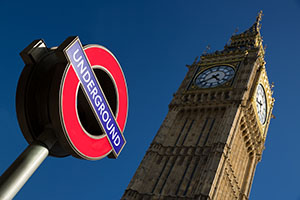Australia cuts its base rate to 2.5%, UK house prices rise significantly
A news event that didn’t rate as high impact,  due to it being considered ‘secular’ to the UK economy and not having international reach, was the publication of UK house prices courtesy of the Halifax, one of the largest mortgage lenders in the UK…
due to it being considered ‘secular’ to the UK economy and not having international reach, was the publication of UK house prices courtesy of the Halifax, one of the largest mortgage lenders in the UK…
House prices are up 4.6% year on year and by 0.9% month on month according to the Halifax. Naturally the mainstream media will rejoice at the news that house prices are recovering to their pre-crash level. Similarly many of the journalists in the leafier suburbs of London, possibly saddled with jumbo mortgages, will be quietly feeling smug at the news that prices appear to be disconnecting with the salaries of ordinary workers and rising exponentially.
However, many economists would counter the ‘feel good’ factor that rising house prices delivers to a small minority, by suggesting that asset price inflation is now dangerously back in the real world were previously it had been contained. ZIRP (zero interest rate policy) and monetary easing caused bubbles in areas of finance far removed from Main Street, but now it would appear that we have leakage. ZIRP and quantitative easing are showing all the signs that they’re creeping into areas of finance for the ordinary consumer and we’ve been here before, approximately six years back and it didn’t end well.
Australia lowers its base rate, but not by enough to create mayhem
The RBA lowered its base rate from 2.75% to 2.5% in the overnight/early morning session. The reduction wasn’t as aggressive as many economists and analysts predicted therefore the Aussie rose. However, the rate is now at a fifty year low, but still out of step with many other advanced countries’ base rates. RBA Governor Glenn Stevens said in a statement that the board:
“will continue to assess the outlook and adjust policy as needed to foster sustainable growth in demand and inflation outcomes consistent with the inflation target over time. It is possible that the exchange rate will depreciate further over time, which would help to foster a rebalancing of growth in the economy.”
UK industrial production and manufacturing rises above expectations
The anticipation was for a 0.9% rise in UK manufacturing, the ONS figure has come in at 1.7% beating the economists’ predictions by some margin. Likewise the production figure beat expectations; coming in at 1.1% above predictions of 0.7%. On a year-on-year basis, industrial production was 1.2% higher than June 2012, and manufacturing output gained 2%.
Italian industrial production rises as Italians fight for IKEA jobs
The Italian production figure came in at 0.3%, slightly below the 0.5% expected, but a improvement on the previous 0.1% nevertheless. However, news regarding the appetite of Italians for entry level minimum wage jobs has caught many analysts’ attention this morning. 28,000 applied for 200 positions in the famous city of Pisa. A depressing indication of just how desperate unemployment is in Italy.
ISTAT, the Italian statistics body, has reported this morning that GDP fell by 0.2% in the second quarter of 2013 improving on the 0.6% decline Italy suffered in the first three months of 2013. The Italian economy has shrunk for eight straight quarters, the longest contraction since records began in 1970. Italian GDP is 2.0% lower than a year ago, illustrating the pain suffered by the country in the last year.
Market overview at 10:15 UK time
The good news with regards to UK manufacturing and production, hasn’t (as of yet) caused the FTSE to rise significantly and the index has remained in the red marginally. Currently the UK FTSE is flat, although the lagging nature of the index could be slightly misleading. The CAC is up 0.25%, DAX up 0.01%, IBEX up 0.43%, and the MIB up 0.29%.
In the overnight early morning Asian Pacific session the Nikkei rose by 1.0%, the Hang Seng closed by 1.34% and the CSI closed up 0.67%. The ASX 200 closed down 0.11% down after the RBA base rate cut. The DJIA equity index future is currently flat as is the SPX. The NASDAQ equity index future is up 0.06%.
WTI crude on ICE has fallen for a second day, down 0.29% at $106.24 per barrel. NYMEX natural is up 0.12% at $3.32. COMEX gold is down 0.94% at $1290 per ounce, silver is down 0.33% at $19.66 per ounce.
Forex focus
The yen fell versus most of its 16 major peers. The Australian dollar rose versus all of its major counterparts due to the central bank ending speculation of further interest-rate cuts after reducing borrowing costs to a record low.
The dollar gained 0.1 percent to 98.37 yen early in the London session. It advanced to 99.95 on Aug 2nd, the most since July 25th. The yen fell 0.1 percent to 130.44 per euro.
The dollar has strengthened 5.1 percent this year, making it the second-biggest gainer amongst the ten developed-nation currencies tracked by the Bloomberg Correlation-Weighted Index. The euro has risen 5.7 percent, while the yen has slumped 8.7 percent.
The Australian dollar has slumped by eleven percent in 2013 through to yesterday, the sharpest drop amongst the ten most developed market currencies tracked by Bloomberg’s Correlation Weighted Index. New Zealand’s dollar has risen 0.5 percent to 78.60 U.S. cents, and has gained 0.7 percent to 77.41 yen.


